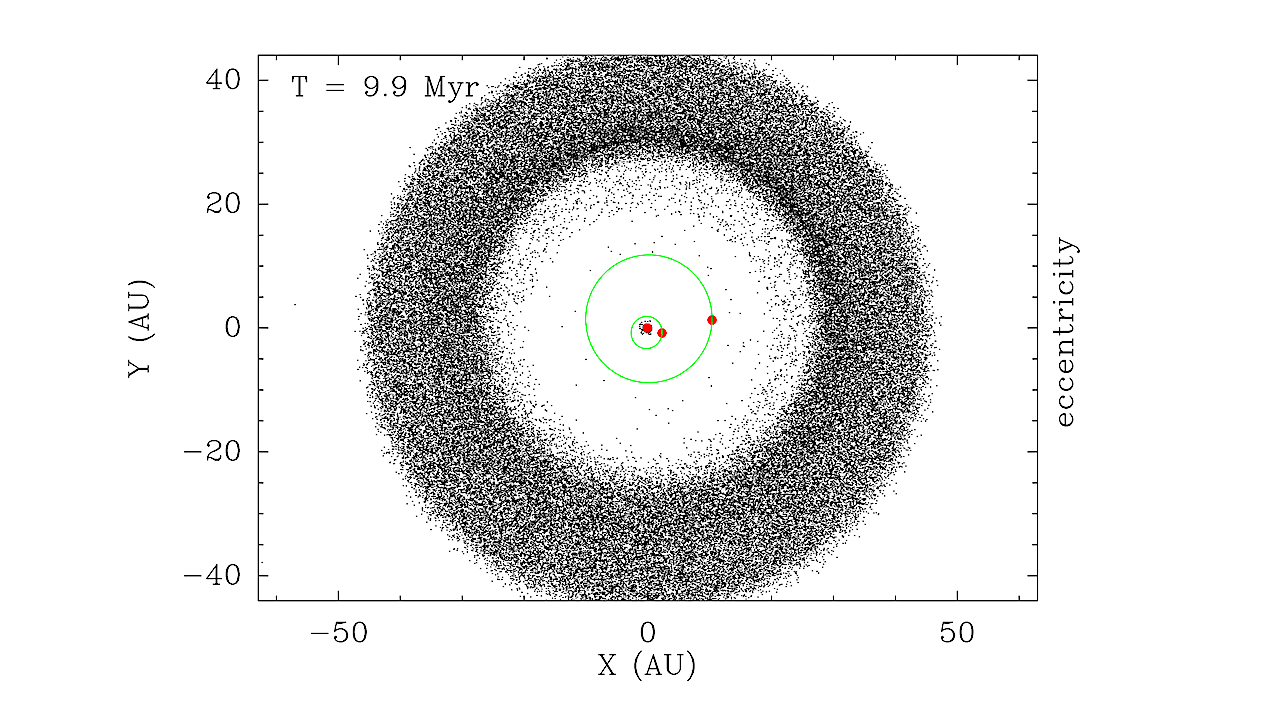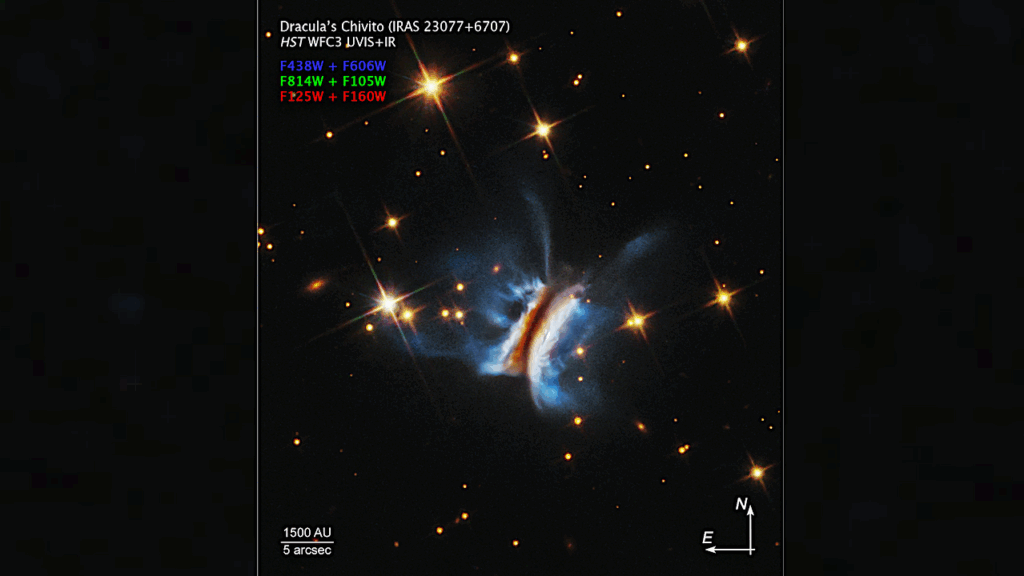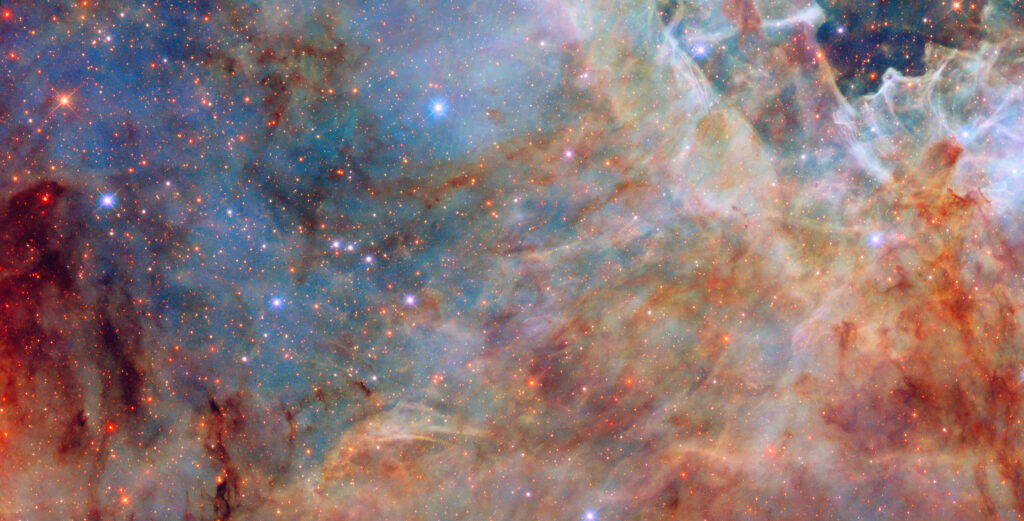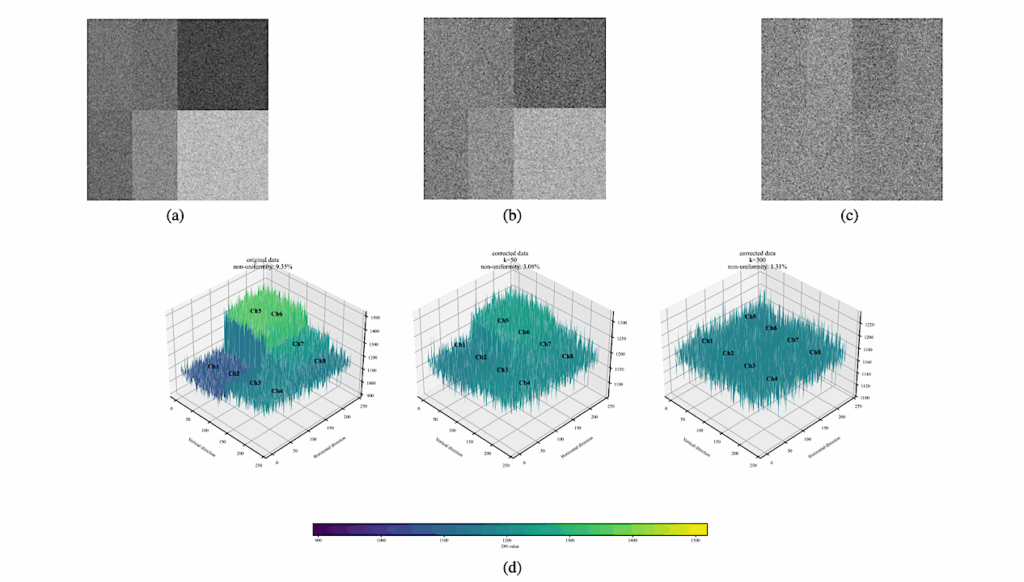Dynamics Of The Beta Pictoris Planetary System And Its Falling Evaporating Bodies

For decades, the spectral variations of Beta Pictoris have been modelled as the result of the evaporation of exocomets close to the star, termed falling evaporating bodies (FEBs).
Resonant perturbations by a giant planet have been proposed to explain the dynamical origin of these stargrazers. The disk is now known to harbour two giant planets, Beta Pic b and c, orbiting the star at 9.9 au and 2.7 au. While the former almost matches the planet formerly suspected, the discovery of the latter complicates the picture.
We first question the stability of the two-planet system. Then we investigate the dynamics of a disk of planetesimals orbiting the star with both planets to check the validity of the FEB generation mechanism. Symplectic N-body simulations are used to determine which regions of the planetesimal disk are dynamically stable. Then we focus on regions where disk particles are able to reach high eccentricities thanks to resonant mechanisms. The first result is that the system is dynamically stable.
Both planets may temporarily fall in 7:1 mean motion resonance (MMR). Then, simulations reveal that the whole region extending between ~1.5 au and ~25 au is unstable to planetary perturbations. However, a disk below 1.5 au survives, which appears to constitute an active source of FEBs via high-order MMRs with Beta Pic c. Beta Pic b acts as a distant perturber that helps sustain the whole process. These simulations rule out the preceding FEB generation mechanism model, which placed their origin at around 4-5 au.
Conversely, FEBs are likely to originate from a region much further in and related to MMRs with Beta Pic c. That mechanism also appears to last longer, as new planetesimals are able to continuously enter the MMRs and evolve towards the FEB state. Subsequently, the physical nature of the FEBs may differ from that previously thought, and presumably may not be icy.
H. Beust, J. Milli, A. Morbidelli, S. Lacour, A.-M. Lagrange, G. Chauvin, M. Bonnefoy, J. Wang
Comments: 14 pages, 10 figures. To appear in Astronomy & Astrophysics
Subjects: Earth and Planetary Astrophysics (astro-ph.EP)
Cite as: arXiv:2401.00715 [astro-ph.EP] (or arXiv:2401.00715v1 [astro-ph.EP] for this version)
Submission history
From: Hervé Beust
[v1] Mon, 1 Jan 2024 10:03:17 UTC (40,168 KB)
https://arxiv.org/abs/2401.00715
Astrobiology








